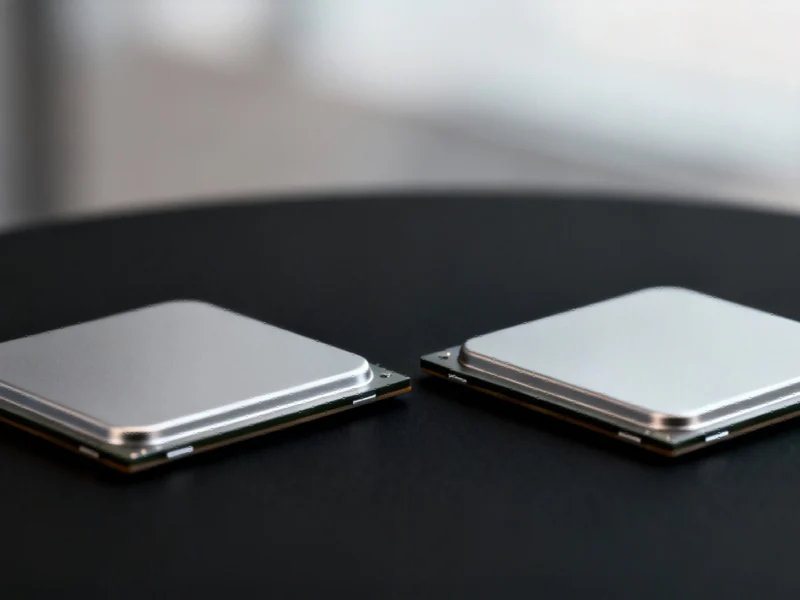The Convergence Era: How Apple’s M5 and A19 Pro Are Redefining Chip Architecture
Apple’s latest silicon revelations reveal a fundamental shift in the company’s processor strategy, with the newly unveiled M5 chip and A19 Pro demonstrating unprecedented architectural alignment. While the M5 embodies a “go big or go home” philosophy with its expansive performance envelope, both chips share a common DNA that signals Apple’s move toward a unified computing ecosystem. This strategic alignment, as detailed in IMD Monitor’s comprehensive analysis of Apple’s silicon convergence, represents a pivotal moment in semiconductor design that extends far beyond simple performance metrics.
Industry observers have noted that the architectural similarities between these processors are more than superficial. According to Macworld’s Jason Cross, the primary distinctions essentially amount to core count and memory bandwidth variations rather than fundamental architectural differences. This means that iPhone 17 Pro and Pro Max users are essentially experiencing Mac-level computational power in their pockets—a remarkable achievement that blurs traditional device categories.
Technical Synchronicity: More Than Just Shared DNA
The convergence between Apple’s mobile and desktop processors represents a calculated engineering masterstroke. Both chips leverage identical CPU architectures, similar GPU designs, and unified memory architectures that scale according to device requirements. This approach enables Apple to optimize research and development resources while ensuring consistent performance characteristics across its product ecosystem.
This silicon strategy mirrors broader industry trends toward platform unification, similar to how cross-platform streaming initiatives are reshaping content delivery. Just as entertainment platforms are breaking down barriers between devices, Apple’s chip architecture is eliminating performance boundaries between mobile and desktop computing.
Developer Advantages and Ecosystem Benefits
For developers, this convergence translates to significant workflow improvements and reduced complexity. The coherent architecture means that applications can be optimized more efficiently across Apple’s entire product lineup. This unified approach eliminates the need for extensive rewrites or separate optimization paths for mobile versus desktop applications.
The benefits extend throughout the technology ecosystem, much like how advanced motherboard designs are pushing memory performance boundaries in the PC space. Apple’s strategy enables developers to focus on innovation rather than compatibility, potentially accelerating the pace of software advancement across all Apple platforms.
Manufacturing and Economic Implications
From a production standpoint, Apple’s convergent chip strategy delivers substantial cost efficiencies and manufacturing simplifications. By maintaining elemental consistency between mobile and desktop processors, Apple can streamline its semiconductor fabrication processes, reduce validation overhead, and optimize its supply chain management.
This approach reflects a broader industry movement toward architectural efficiency, comparable to how compact computing solutions are redefining form factors without compromising performance. The economic benefits of this strategy likely extend beyond Apple to consumers through potentially lower development costs and faster innovation cycles.
Future Trajectory and Industry Impact
The implications of Apple’s silicon convergence extend far beyond current product cycles. This strategy positions Apple to more seamlessly integrate artificial intelligence, machine learning, and advanced computational capabilities across all device categories. The unified architecture creates a foundation for future technologies that can operate consistently regardless of form factor.
This architectural philosophy aligns with emerging computing paradigms, similar to how game developers are creating unified multiplayer experiences across platforms. The boundaries between device categories continue to dissolve, enabling new types of applications and user experiences.
Looking forward, Apple’s approach may influence how enterprise solutions are developed and deployed. The consistent architecture could enable more sophisticated enterprise customization and skill development across mobile and desktop environments, potentially transforming how businesses leverage Apple’s ecosystem for productivity and innovation.
The Competitive Landscape Reshaped
Apple’s silicon convergence strategy creates significant competitive advantages that extend beyond raw performance metrics. By maintaining architectural consistency across product categories, Apple can leverage its entire ecosystem to create compelling user experiences that are difficult for competitors to replicate. This approach enables seamless transitions between devices, consistent application behavior, and optimized performance regardless of form factor.
The M5 and A19 Pro convergence represents more than just technical achievement—it signals Apple’s vision for a truly unified computing future where the distinction between mobile and desktop becomes increasingly irrelevant to the user experience.
Based on reporting by {‘uri’: ‘wccftech.com’, ‘dataType’: ‘news’, ‘title’: ‘Wccftech’, ‘description’: ‘We bring you the latest from hardware, mobile technology and gaming industries in news, reviews, guides and more.’, ‘location’: {‘type’: ‘country’, ‘geoNamesId’: ‘6252001’, ‘label’: {‘eng’: ‘United States’}, ‘population’: 310232863, ‘lat’: 39.76, ‘long’: -98.5, ‘area’: 9629091, ‘continent’: ‘Noth America’}, ‘locationValidated’: False, ‘ranking’: {‘importanceRank’: 211894, ‘alexaGlobalRank’: 5765, ‘alexaCountryRank’: 3681}}. This article aggregates information from publicly available sources. All trademarks and copyrights belong to their respective owners.



